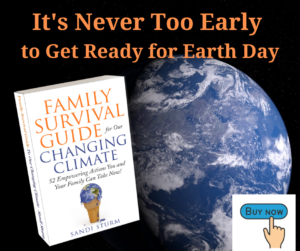Photo credit: Deposit Photo
[This is not meant to be a full scientific study of Palm Oil – but an introduction for those who might not know why we hear about it.]
Palm oil is the world’s most edible and affordable oil, but the agricultural practices are not always sustainable. In fact, palm oil production between 1990 and 2008 was responsible for about 8% of the world’s deforestation.
It’s in just about everything.
It shows up in toothpaste, moisturizer, facewash, shampoos and conditioners – and that is just in the bathroom. The kitchen cupboards are full of the stuff, from the obvious nut butters, to saltines, energy bars, bread and even frozen pizza. The more processed, the better chance it contains palm oil.
My ingredients list doesn’t include Palm Oil
Or does it? Here are other ways palm oil are listed in ingredient lists:
INGREDIENTS: Vegetable Oil, Vegetable Fat, Palm Kernel, Palm Kernel Oil, Palm Fruit Oil, Palmate, Palmitate, Palmolein, Glyceryl, Stearate, Stearic Acid, Elaeis Guineensis, Palmitic Acid, Palm Stearine, Palmitoyl Oxostearamide, Palmitoyl Tetrapeptide-3, Sodium Laureth Sulfate, Sodium Lauryl Sulfate, Sodium Kernelate, Sodium Palm Kernelate, Sodium Lauryl Lactylate/Sulphate, Hyrated Palm Glycerides, Etyl Palmitate, Octyl Palmitate, Palmityl Alcohol
Look for products with very short ingredient lists. For example, bread from a bakery has less ingredients and hopefully no palm oil as compared to packaged breads.
So what is the big deal?
Palm plantations are mainly in Malaysia and Indonesia, which produces about 90% of the world’s supply. In order to grow the palms, the rainforests are burned and cleared. In fact, about 80% of fires in Indonesia are due to palm oil production.
Indonesian tropical forests are treasure troves of biodiversity, holding 10% of the world’s species of reptiles, birds, mammals, and fish. Much like the Amazon rainforest, they also store vast amounts of carbon in their soils and trees.
Not to mention the addition of CO2 put into the atmosphere from the burning, which contributes to climate change.
How can we avoid it?
Make sure your products are certified sustainable by organizations such as the Rainforest Alliance or the Roundtable on Sustainable Palm Oil (RSPO).
Eating whole foods is also a safe practice. Plus it has less of an impact on our environment and is better for your health.
Is all Palm Oil Bad?
Several NGOs, including WWF, the Union of Concerned Scientists, and the Cheyenne Mountain Zoo, issue guides to help consumers make smart decisions about palm oil. However, the certifications don’t seem to be working.
Plantations with eco-friendly endorsements have lost 38 per cent of their forest cover since 2007, while non-certified areas have lost 34 per cent, according to researchers from Purdue University in the US state of Indiana.
While it is natural to think that we should avoid palm oil all together, the World Wildlife Fund has this message:
But you don’t have to give up products containing palm oil! Avoiding palm oil could have worse effects because it might take support away from companies that are trying hard to improve the situation. This could encourage companies to use other products that may have even more impact on the environment. Palm oil is by far the most efficient vegetable oil to grow as it takes less land to produce than other vegetable oils. Palm oil can be produced in a responsible manner that respects the environment and the communities where it is commonly grown.









